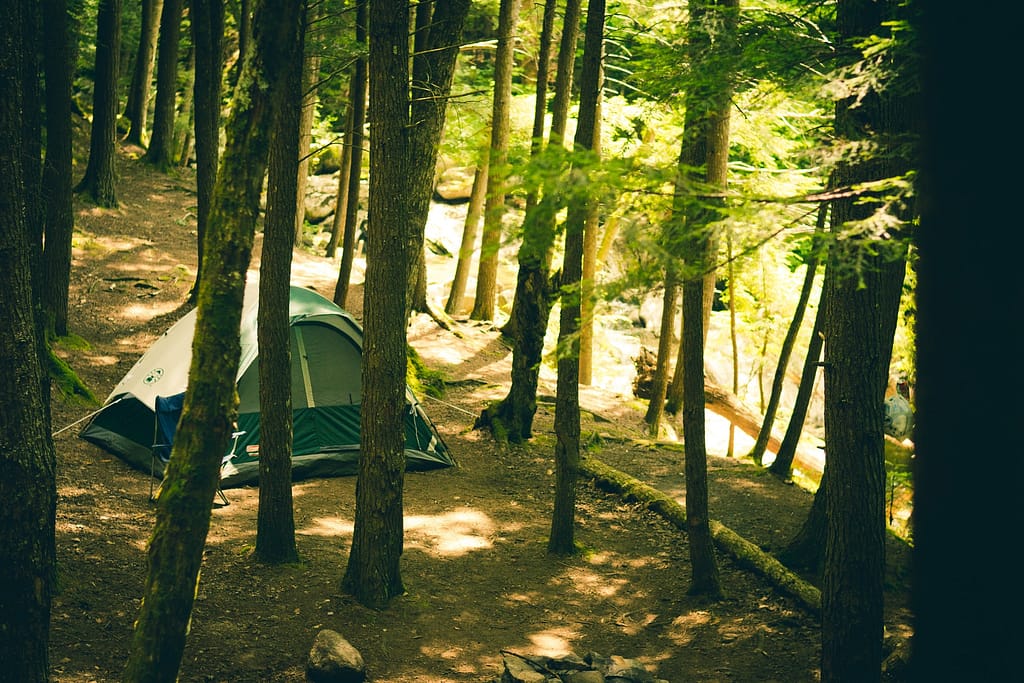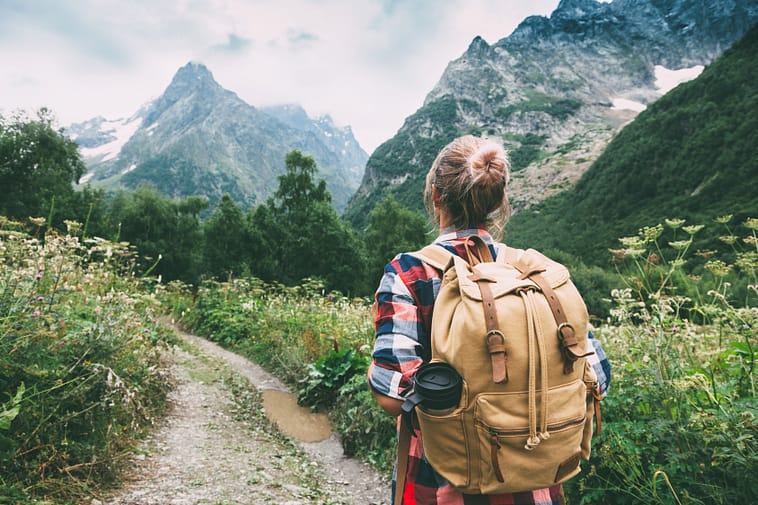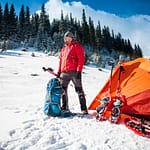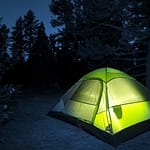Hiking and camping, in general, can prove a difficult task, especially if the weather isn’t ot your side. Different seasons come with different conditions and all of those require proper preparation and planning ahead. Join us on our attempt to give you some of the most important hiking tips and tricks which will save you a lot of headaches once out into the wild.
We will list what we think are the best tips in a list which isn’t necessarily in order of importance, so do not pay attention to the place in which an advice comes.
Key Takeaway: Preparation is everything. Stay hydrated, check out weather conditions before you set out, bring along a map so you don’t get lost, have the right footwear, and try to avoid hiking alone. These are just some of the top tips we cover, but there is so much more to learn about hiking, such as tips that can keep you safe, how to choose the right clothing, and how to deal with aches and pains that are sure to follow after a long hike through the backcountry.
Keep reading to learn more important hiking tips that you can rely on during your next adventure.
Tip #1 – Always Plan Ahead
Planning ahead is one of the most important things for a beginner hiker. Even experienced hikers take their time to plan the whole trip out. Taking the necessary precautions before going into the wild will set you on course for success (and potentially save your life).
Try to learn the route you will be taking and see if there are any local landmarks that you can use as checkpoints or orientation points. Pack according to the weather forecast but always bring an extra layer of clothing and extra dry food.
Tip #2 – Do Not Feed The Wildlife
Speaking of bringing extra food, make sure you keep that food to yourself or the group of people hiking along. Never feed a moose or a bear, no matter how much you want to feel like a Disney princess. Animals might feel more comfortable around your group if you start feeding them and might start wandering around your camp to find even more food themselves. Try sticking to just watching the animals and if you encounter a bear just back away slowly.
Tip #3 – Make Sure Your Feet Are Comfortable
Foot comfort is paramount for hiking. You can always go to the trail wearing anything you want but we suggest swapping to a more comfortable shoe once on the trail. Boots are usually the go-to choice for most hikers since they provide the most comfort and stability to the ankle. When changing shoes you can also change socks to a pair which isn’t made of cotton (cotton absorbs water from your skin and keeps it there).
When on a lunch break, take your boots off and let your feet cool down. Massaging your feet or lifting them high is extremely helpful for blood flow as well.
If you’re on a long hike, you can soak your feet in a nearby river or lake to reduce swelling and heat.
Tip #4 – Handling Joint And Muscle Pain
Stretching your muscles before going for a long walk will always be beneficial to them. When taking a break, stretch your legs and arms since they will be the main parts that have taken the load. This will not only improve the rest of your hike but your recovery on the next day.
Try getting some blueberries in your food bag. They reduce inflammation which is the main cause of joint pain. Not only they are tasty but your knees will be forever grateful. Trekking poles further reduce the impact on your knees during long hikes.
Tip #5 – You Should Dress In Layers

During winter the main reason for trauma is frostbite. You should always carry an extra layer of clothing when out in the cold. The opposite goes for summertime. Make sure you take light clothing with you in case you heat up too much.
Dressing in layers allows you to regulate the temperature of your body more efficiently, ultimately leading to a better experience. Having a waterproof set of clothes or a raincoat will never hurt you as well, in case of those sudden pop up summer showers.
Apart from good clothing, you will need a great tent. Check out our full Buyer’s Guide on that topic.
Tip #6 – Always Bring A Map Or A Compass
This might seem obvious but people always think that they are fine without one. A good topographical map of the region you are hiking in can prove extremely useful in case you get lost. Try spending a few hours to learn how to use a map and a compass before embarking on your journey.
A more modern approach will be to get a GPS device and we aren’t talking about a smartphone but a specified device which serves this purpose only. Phones tend to lose signal in the areas where you will most likely get lost.
Tip #7 – Bring Tools, Knife, And A Firestarter
These are the must haves for any hiker’s backpack. If you bring along a set of matchsticks make sure you waterproof them in case your backpack gets soaked up. A good tactical knife is the ideal solution to most of the problems that can pop up while into the wild. It can cut strangled ropes, cut wood and food, etc.
Want to know how to make a great campfire and keep it burning throughout the night? Head over to our dedicated article on this topic.
Training for a Long-Distance Hike
Before diving right in and joining a team of experienced hikers, practice will be important. Not only will it help you get in shape rather quickly, but you’ll also be able to keep up with your buddies, so you won’t hold up the team or get left behind.
When we say long-distance hikes, we’re referring to hikes that are longer than five miles. If you and your friends are planning a hiking camping trip, you may be expected to hike more than five miles a day, as you and your team move from one campsite to the next. Many of these long-distance hiking trips can last for several days, or in some cases, weeks.
So, if you’re out of shape, or you’re in shape but you don’t have much hiking experience, training a couple of months before the trip will be just what you need to whip yourself into shape so you’re fully prepared for the hiking adventure to come.
Our first hiking training tip is to practice hiking wearing a pack. Don’t go overboard and fill it with gear and supplies that you’ll be taking on your trip. Instead, start off with just the basics, such as food, water, and a first aid kit.
As you feel yourself getting stronger and able to hike farther, you can slowly start adding some weight to your pack.
Pacing yourself when you’re training will also be important. Overtraining can be easy to do, especially if you’re eager to get into shape and lose weight. But overdoing it can lead to serious injuries, muscle strains, sprained ankles, and total burnout.
For your first week of training, try hiking two to three times a week for no more than three miles. If by the end of the week you feel as though you’re ready for more of a challenge, add to or three more miles each time you hike.
The goal here is to slowly increase your endurance, without causing exhaustion, injury, or burnout.
Remember, during this time you will be slowly adding more weight to your pack until you’re able to hike longer distances with a full load.
If you stick to it and continue to push yourself, by the time your trip rolls around you’ll be well prepared for anything Mother Nature throws at you out on the trail.
Hiker’s Old School Tricks
It wouldn’t be a helpful article if we did not include some of the most time-proven tricks that experienced hikers use all the time. Here is a small list with some of the coolest ones:
- Put your feet on your backpack when you go for a nap. That helps reduce swelling from the long walk you underwent during the day. This also shortens the space you take in the tent allowing for more space for other people or backpacks.
- Keep your toenails clipped. Don’t ask why, just trust us.
- When the weather goes bad, make sure you take even a small break to eat. Having a full stomach will prevent you from feeling cold.
- Do not camp near rivers or lakes. The air around them is quite moist and can leave more morning dew on your tent or sleeping bags. The air will most likely get colder during the night as well.
- If hiking during snowy days, try crossing the streams early in the day when glacial water is in its lowest point.
- When crossing a stream try angling slightly downwards. That way the stream will help you with your steps instead of pushing against them.
- In freezing temperatures, only fill up your bottle up to ¾ of its volume. That way the water inside will keep moving and that will prevent it from freezing.





